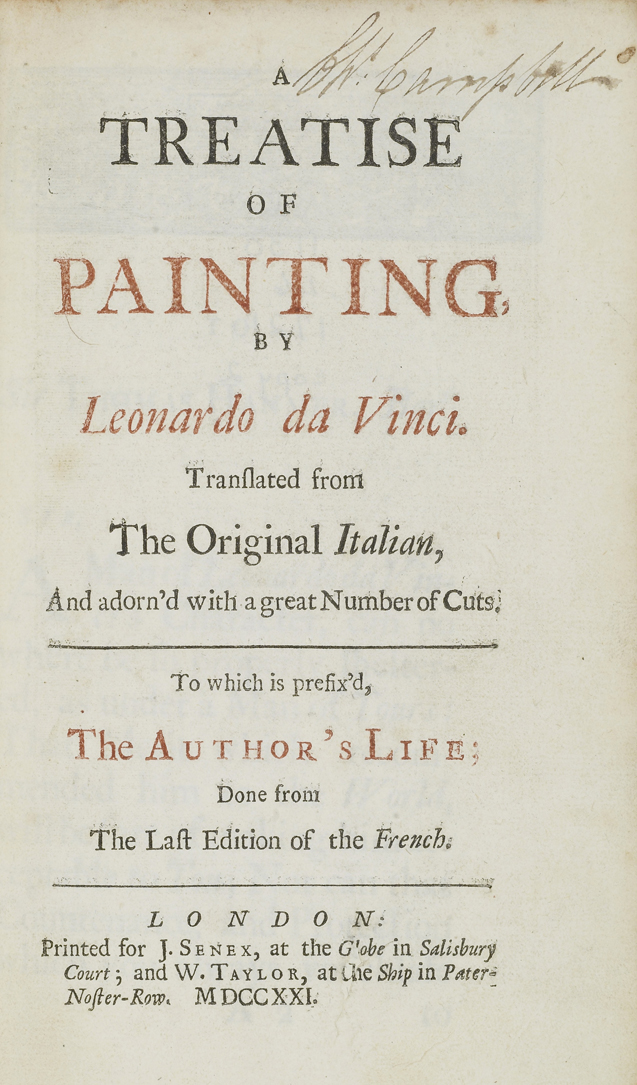
A Treatise on Painting, by Leonardo da Vinci
1721
Senex and Taylor, London
Illustrations:  | Chapter Display  |
I309
It may sometimes happen, that the same Colour shall not receive any alteration, tho' view'd at different distances; this must be the case, when the several densities of the Air, and the several distances whence the Colours are seen, bear the same proportion: The Proof is as follows; let A be an Eye, [Tab. 1. Fig. 9.] and H any Colour that you please, placed one Degree distant from the Eye, and in an Air four Degrees dense; now, because the second Degree above, A M N L is twice as subtile as the Degree beneath, the Colour must be twice the distance of A H, removed from the Eye in A M N L, to make it appear the same that it did in the former Degree; and of course must be placed in the Point G: fur ther, if the Colour be rais'd to a Degree twice as subtile as the second, viz. to O M P N, it must be removed to the distance E; in which case the Line of its distance A E, will be Equivalent in quantity of Air, to the distance A G, as will appear from the following demonstration; if in the same density of Air, the distance A G interposed between the Eye and the Colour, take up two Degrees, and A E two Degrees and an half, that difference, is enough to prevent the Colour G, from undergoing any alteration in its removal to E; because the two Degrees A C and A F, being in the same density of Air, are alike and equal; but the Degree of Air C D, though equal in length to the Degree F G, is nevertheless unequal to it in density, because it is found in an Air twice as subtile as that below; one half Degree distance of which last, intercepts as much of the Colour, as a whole Degree of the former: By calculating therefore, first the densities of the Air, and lastly the distances, you will find the Colours to have chang'd their places, without any alteration in their Lustre: the density of the Air you may calculate thus; The Colour H is placed in an Air four Degrees dense, the Colour G in two, and that E in one; now let us see whether the distances be in a Reciprocal proportion, but converse; the Colour E is distant from the Eye two Degrees and a half, the Colour G two Degrees, and the Colour H one; but these distances not bearing an exact proportion to the densities, we must proceed to a third Calculus, somewhat after this manner; the Degree A C, we have already supposed similar and equal to that A F, and the half Degree C B is similar, but not equal to the degree A F, as being but half a Degree in length, which at the same time is equal in quantity of Air, to an entire Degree of that above it: The calculation will now be found compleat and satisfactory; for A C is equivalent in quantity, to two Degrees of the Air above, and the half Degree C B is equivalent to one entire Degree of the said Air, and another Degree is found between B E, which makes the Sum of A E equivalent to four Degrees of density: Thus A H has likewise four Degrees of density; and A G has four in like manner, viz. A F two, and F G as many, which added together make four: so that if the distance A E, be not double the distance A G, nor quadruple the distance A H, yet has it that deficiency supply'd by the half Degree of dense Air C B, which is equivalent to a whole Degree of the subtile Air above. Thus have we proved our proposition, which was, that the Colour H G E, will be seen the same, at different distances.